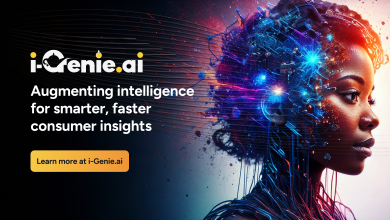
The pandemic forced a rapid transformation in customer service, pushing companies towards automation almost overnight. In that scramble, chatbots became the go-to solution—cheap, fast, and good enough to get by. However, the chatbots that helped businesses stay afloat during crisis mode are now falling short. Customers are increasingly frustrated by rigid, scripted interactions and that dissatisfaction is starting to cost.
What began as a stopgap has become a sticking point. The first wave of chatbot adoption was pragmatic, but it lacked the adaptability required for today’s customer expectations. Now, businesses are rethinking AI’s role in business, one where AI-powered systems don’t just react to user input, but proactively manage workflows and drive outcomes.
Agentic AI represents what will be a shift beyond simple rule-based systems to more fluid conversations and end-to-end managed workflows. This emerging approach will deliver the personalised experiences that customers demand while unlocking new operational efficiencies.
Recognising the limitations of chatbots
The adoption of chatbots delivered speed and scale but not satisfaction. As customer queries have become more nuanced, chatbots can’t flex to meet real-world customer queries. Many businesses are questioning their value as part of their wider customer experience approach. Data shows 38% of businesses report customer frustration with scripted, impersonal responses. This dissatisfaction undermines the ROI for traditional chatbot systems as customer expectations for seamless, intuitive interactions continue to rise.
The core problem is structural. Traditional chatbots simply operate within narrow, predefined pathways that can’t adapt to the complexity of human needs. When customer inquiries become too complex for these rigid boundaries, the experience collapses. This fundamental limitation forces businesses to choose between disappointing customers or maintaining costly human backup systems, neither of which is sustainable.
The shift to agentic AI
Agentic AI represents the next generation of AI systems powered by large language models (LLMs) and advanced algorithms that go far beyond the capabilities of traditional chatbots. Unlike their predecessors that simply respond to predefined prompts, agentic AI operates proactively, managing entire workflows independently, making business decisions, and adapting to evolving situations in real-time. For example, in customer service, agentic AI can answer questions, route inquiries, book appointments, and follow up with customers without human intervention.
Importantly, this technology isn’t reserved for large corporations with extensive resources. Small and medium-sized businesses are now leveraging these innovations to compete more effectively with larger enterprises. Solutions like our own RingCentral AI Receptionist are aimed at leveling the playing field and providing SMBs with a much needed ‘digital employee’ to manage calls, handle inquiries, and ensure that no opportunity is missed.
At a time when personalisation matters most, agentic AI strikes a crucial balance between automation and human connection. The technology is not designed to replace human work, but enhance it with insights and automation. Early adopters have seen a more personalised service while simultaneously reducing the burden of repetitive tasks on their teams. This dual benefit of improved customer experience and enhanced operational efficiency represents the core promise of agentic AI in business communications.
Furthermore, such solutions have the ability to build relationships through consistent, context-aware interactions that improve with each engagement. As each system becomes more conversational and less robotic, agentic AI will increasingly be able to handle complex emotional nuances that were previously the exclusive domain of human agents.
The future of business communications
Over the next five years, there is little doubt that agentic AI will transform business workflows and become the standard tools for organisations across industries. There are two key reasons for this: · Firstly, data indicates the business world is fully embracing this shift, with 97% of leaders anticipating increased spending on AI tools over the next three to five years, and more than a third expecting substantial investment increases of 50-74%. · Secondly, Gartner predicts that by 2028, 33% of enterprise software applications will include autonomous AI agents capable of managing workflows and making day-to-day work decisions. As these systems become more sophisticated, they will increasingly transform raw data into actionable intelligence, moving beyond educated guesses to truly data-driven decisions.
Both of these reasons underscore executive recognition that AI capabilities are rapidly becoming a strategic necessity.
If the pandemic authored the first chapter of digital customer interactions, agentic AI is certainly poised to write the next. Now, more than ever, businesses need powerful, proactive competitive advantages that can deliver operational efficiency and exceptional customer experiences. By decoding both the content and context of communication, agentic AI transcends robotic scripts and ushers in an era where businesses finally hear what customers mean, not just what they say—leaving the age of frustrating, formulaic exchanges firmly in the past.





